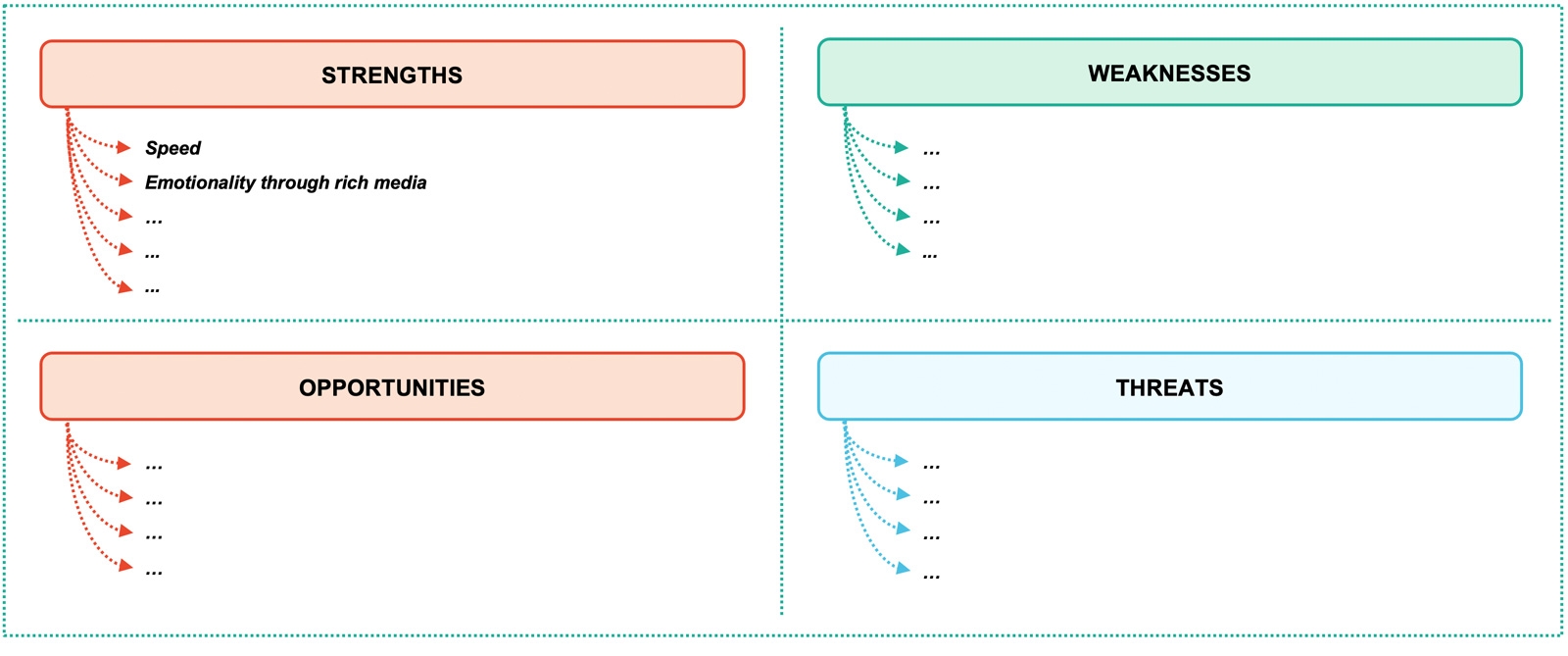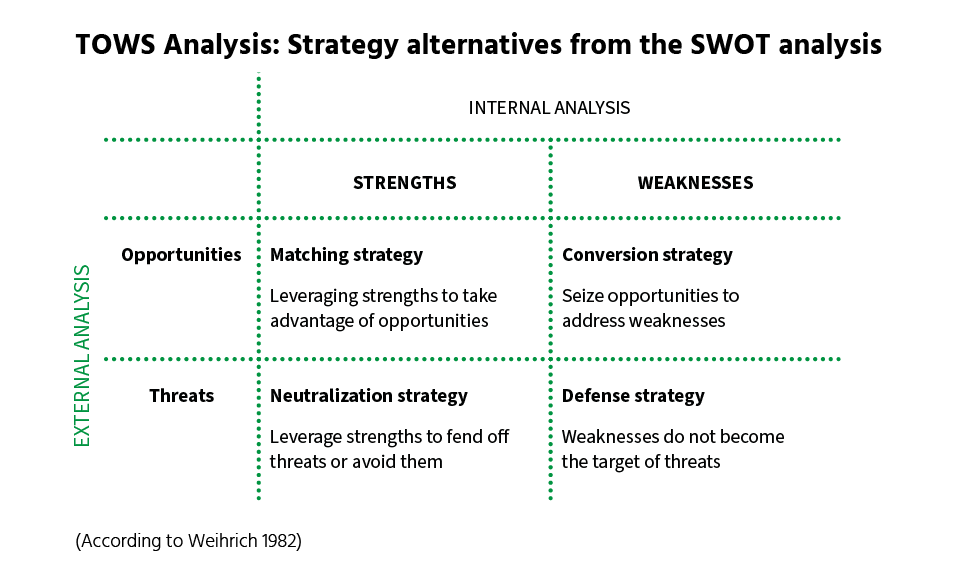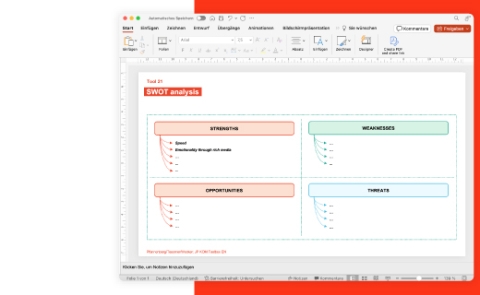SWOT Analysis

Guiding question
What strategic options for action result from the findings of the analysis?
Objectives
- Provide a structured overview of the analysis results
- Relating internal and external success factors and challenges
- Assess opportunities and threats to one's strategy
- Provide decision support tools to prioritize strategic courses of action
Implementation
SWOT analysis is a good tool to summarize the results of the previously performed analyses in a clear, systematic and connected-dialectical form. This is done in list form in a four-field graphic with Strengths, Weaknesses, Opportunities, and Threats fields.
For the SWOT analysis, the previous analysis results must be summarized, typically in abbreviated sentences. The lists in the fields of the SWOT analysis do not have to be categorically clean, i.e., analysis results of all types stand directly next to each other.
For the SWOT analysis in communication, it is important that the levels Company and Communication are not mixed: The development of communication strategies is not about analyzing the strengths and weaknesses of the company's organization and products, nor the associated opportunities and threats in the environment; it is exclusively about the strengths and weaknesses of communicative positions and the associated opportunities and threats in discursive formations of stakeholder relations and the publics that reflect them.
The typical steps of the SWOT analysis of communication are:
- Internal Analysis. Strengths and weaknesses of one's own position, which can be influenced by one's own (communication) behavior, are listed.
- External Analysis. Strategically relevant opportunities (chances) of communication and threats (crisis potentials) in the environment of the company are identified.
- SWOT synopsis. One's own strengths and weaknesses as well as the opportunities and threats in the environment are put into perspective. The Strengths/Threats and Weaknesses/Opportunities relationships are often of particular interest.
- Derivation of strategic consequences. The strategy aims at maximizing the benefits from own strengths and the opportunities in the market and/or minimizing the losses from weaknesses and threats in the environment.
Theory: SWOT analysis
SWOT analysis is a strategic planning tool, it was developed in the 1960s at Harvard Business School for use in companies and organizations. SWOT is an acronym for Strengths, Weaknesses, Opportunities, and Threats.
The SWOT analysis relates the environmental analysis – the opportunities and threats, e.g., from changes in the market and other environmental areas – to the analysis of the company's own strengths and weaknesses – e.g., its own product or processes. Internal analysis examines the factors that the company can influence through its own actions. One instrument of external analysis is the STEP analysis, which systematically collects Sociological-cultural, Technological, Economic, and Political-legal environmental factors (see Elkin 2007).
From the combination of internal and external analysis in the SWOT analysis, four strategy options emerge in the TOWS analysis:
- SO: Matching strategy. How can strengths be leveraged to take advantage of opportunities in the environment?
- ST: Neutralization strategy. How can one's strengths be used to avert the threat of hazards in the environment?
- WO: Conversion strategy. How can opportunities be used to develop weaknesses into strengths?
- WT: Defense Strategy. What are our own weaknesses and how can we prevent them from becoming the cause of threats from the environment?

